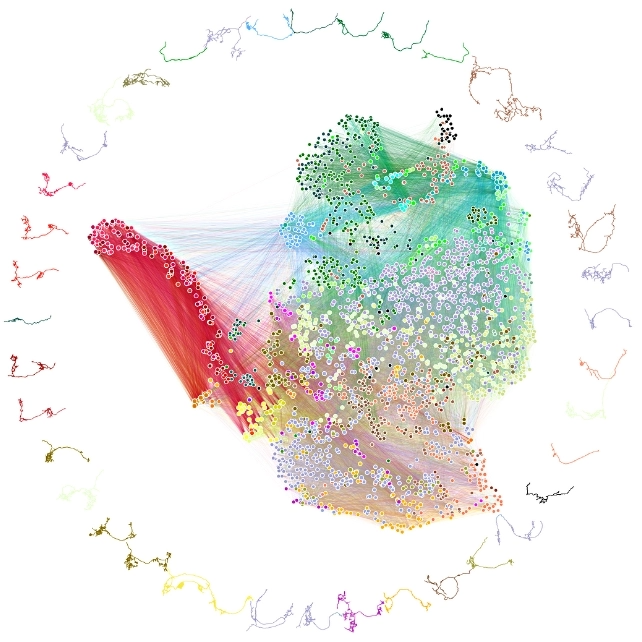After 12 years of work, a huge team of researchers from the UK, US, and Germany have completed the largest and most complex brain map to date, describing every neural connection in the brain of a larval fruit fly.
Though nowhere near the size and complexity of a human brain, it still covers a respectable 548,000 connections between a total of 3,016 neurons.
The mapping identifies the different types of neurons and their pathways, including interactions between the two sides of the brain, and between the brain and ventral nerve cord. This brings scientists closer to understanding how the movements of signals from neuron to neuron lead to behavior and learning.
"If we want to understand who we are and how we think, part of that is understanding the mechanism of thought," says Joshua T. Vogelstein, a biomedical engineer at Johns Hopkins University.
"And the key to that is knowing how neurons connect with each other."
To create this magnificent multi-functional map, called a connectome, researchers scanned thousands of slices of the baby fruit fly's brain with a high-resolution electron microscope. They then put the pictures together and added them to data they had already gathered, meticulously marking each and every connection between neurons.
That includes both the cells that talk to each other within each half of the brain as well as those that communicate between the two hemispheres, making it possible to study the interactions across the brain in depth.
The brain's hemispheres have unique and important functions, but how they integrate and use information from each side for complex behavior and cognition is not as well understood.
"The way the brain circuit is structured influences the computations the brain can do," explains neuroscientist Marta Zlatic from the University of Cambridge.
"But, up until this point, we've not seen the structure of any brain except of the roundworm Caenorhabditis elegans, the tadpole of a low chordate, and the larva of a marine annelid, all of which have several hundred neurons."

Recently, scientists have made significant progress in charting the human brain, and tracked neural activity in mice, but the focus has been on specific regions and current technology is still not advanced enough to complete a connectome for larger animals such as humans.
However, Zlatic explains, "All brains are similar – they are all networks of interconnected neurons – and all brains of all species have to perform many complex behaviors: they all need to process sensory information, learn, select actions, navigate their environments, choose food, recognise their conspecifics, escape from predators etc."
Fruit flies (Drosophila melanogaster) are a popular scientific research model due to their easy-to-study features, their complex but compact brains, and because they share many biological similarities with us humans.
Notably, the connecting structures the researchers observed were determined to be most repetitive among the ingoing and outgoing neurons in the part of the brain that allows us to to learn and remember what we've learnt.
They also found that some of the identified features worked in a similar way to some computer networks for machine learning.

"What we learned about code for fruit flies will have implications for the code for humans," states Vogelstein. "That's what we want to understand – how to write a program that leads to a human brain network."
The team suggests a next step will be to learn more about the neural structure involved in certain behavioral functions, such as learning and decision making, and to look at the activity of the whole connectome while the insect is engaged in activity.
The first effort to map a brain was a 14-year study of C. elegans that started in the 1970s. It yielded an incomplete map of the roundworm's brain and eventually earned the scientists a Nobel Prize.
"It's been 50 years and this is the first brain connectome. It's a flag in the sand that we can do this," Vogelstein says.
"Everything has been working up to this."
The research has been published in the journal Science.
 Media
Media